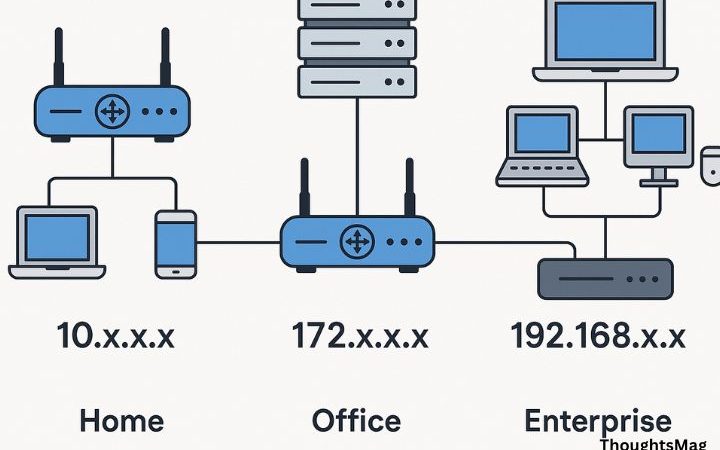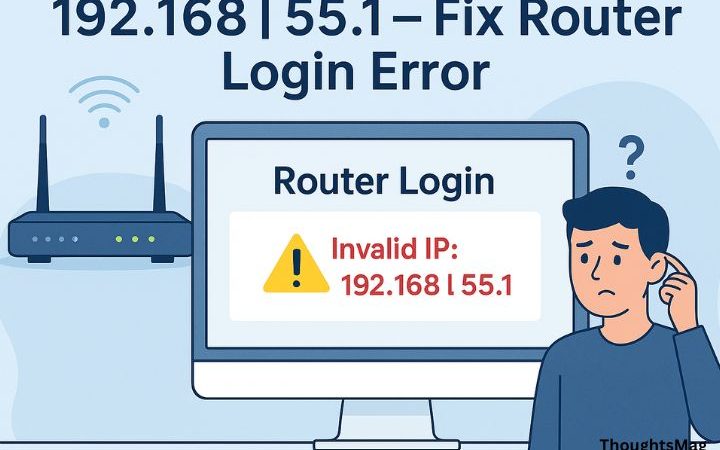How do you assess the risks of automation in your RPA projects?
As organizations embrace the revolutionary power of RPA (Robotic Process Automation), the journey also comes with a set of challenges and potential pitfalls, mainly concerning the risks related with automation. Assessing risks in RPA projects isn’t merely a precautionary step; it is a strategic move to ensure the security, success, and resilience of automation initiatives. By systematically determining the scope, scrutinizing data flows, aligning with compliance requirements, implementing robust security controls, and fostering a culture of security awareness, companies can navigate the intricacies of RPA projects with full confidence. Every single step in this risk assessment path contributes to a robust framework that not only fixes immediate concerns but also positions RPA projects for long-term benefit and success. This article delves into the complex landscape of risks in RPA projects, aiming to give organizations a comprehensive knowledge and understanding of how to navigate potential pitfalls. We will explore key considerations and strategies, with a specific emphasis on the pivotal role of automation testing in fortifying RPA initiatives.
Why is it essential to assess Risks in RPA projects?
Evaluating risks in RPA (Robotic Process Automation) projects is crucial for myriad key reasons:
- Concerns to Security and Data Breaches: Robotic Process Automation (RPA) projects often include handling sensitive data. Evaluating risks helps detect potential vulnerabilities that could result in data breaches, protecting the confidentiality and integrity of crucial information.
- Operational Stability: Automation errors can disturb operations, resulting in inefficiencies and possible financial losses. Evaluating risks allows companies to detect and mitigate bugs, confirming the seamless functioning of automated procedures.
- Regulatory Compliance Requirements: Various industries are subject to specific regulations & compliance standards. Evaluating risks and vulnerabilities helps ensure that Robotic Process Automation projects align with these requirements, avoiding legal consequences and reputational harm.
- Resource Optimization: Risk and potential vulnerabilities assessment assists in defining the scope of automation. By identifying suitable procedures, businesses can optimize resources and focus efforts on regions that offer the most significant advantages while reducing potential pitfalls.
- Financial Implications: Operational disruptions and errors can incur potential financial expenses. By proactively measuring risks, organizations can reduce the financial effect linked with potential automation-related concerns.
- Security Cultural Awareness: Evaluating risks fosters a culture of security consciousness within the organization. It encourages teams to understand the significance of security measures, decreasing the likelihood of inadvertent security lapses.
- Adherence to Industry Standards and Best Practices: Assessing potential risks ensures that Robotic Process Automation projects stick to industry best practices. This not just improves the overall quality of automation executions but also positions organizations as leaders in their respective fields.
- Continuous Improvement and Learning from Threats: The method of risk evaluation encourages organizations to learn from potential drawbacks and pitfalls. It promotes a culture of continuous improvement, enabling teams to refine and improve Robotic Process Automation processes over time.
- Operational Readiness and Preparedness for Disruptions: Evaluating risks prepares companies for potential operational disruptions. This readiness includes contingency planning effective mitigation strategies to manage business continuity.
- Strategic Alignment for Long-Term Success: Understanding and fixing risks strategically contribute to the long-term success of Robotic Process Automation projects. It confirms that automation initiatives not just deliver instant benefits but also remain adaptable and resilient in the face of growing challenges.
In short, risk assessment in Robotic Process Automation (RPA) projects isn’t just a precautionary measure; it is a strategic and proactive approach to ensuring the efficiency, security, and long-term success of automation initiatives in a fast-growing digital landscape.
Navigating the Risks and Pitfalls of Automation in RPA Projects: A Strategic Approach
Automation in RPA (Robotic Process Automation) projects brings huge efficiency, but it also introduces potential threats that companies should navigate adeptly. Let’s explore key pointers to confirm a secure and compliant automation journey.
- Identify Your Automation Scope and Objective
Before diving into automation, you need to define the scope and goals of your automation project. What procedures are you going to automate, and why? What are the projected advantages and results? What are the potential threats and effects of automation on your customers, business, and stakeholders? Detect processes suitable for automation, considering factors such as data sensitivity, complexity, and criticality. By answering these queries, you can prioritize the more feasible and valuable automation prospects, and avoid unnecessary or risky ones. This initial step lays the foundation for a risk-aware and targeted automation strategy.
- Scrutinize Your Data Sources and Flows
Comprehensive data analysis and flow are critical. Determine the sources of data that automation procedures interact with and examine data flows. Understanding potential vulnerabilities and data dependencies confirms data integrity and mitigates risks related to improper data handling. It is crucial to implement security measures and controls to protect the data they handle from malware, cyberattacks, or human errors. Encrypting data at rest and in transit, using secure authorization and authentication mechanisms for data access, applying the norm of least privilege and segregation of duties for bot responsibilities and roles, auditing and monitoring, and data activities and logs, updating and patching software and dependencies, and implementing recovery backup plans for data failures or disasters are all best practices to guarantee your safety.
- Execute Security Controls & Measures
One of the main security and compliance concerns of Robotic Process Automation is data safety and protection. Security should be the foundation of your automation strategy. Your bots will access, process, and accumulate confidential and sensitive information, such as medical records, personal information, or financial transactions. You need to scrutinize the data flows and sources involved in your automation procedures and find the data types, locations, owners, formats, and users. You also have to map out the data lifecycle, from formation to removal, and confirm that your bots follow the data governance standards and policies of your organization and industry. Execute robust security controls throughout the automation lifecycle. Encryption, secure coding practices, and secure access controls are essential elements. Regularly assess and update security controls and measures to stay resilient against growing threats.
- Align Your Automation with Compliance Requirements
Depending on your industry and jurisdiction, ensure your RPA projects align with industry and regulatory compliance requirements. This encompasses understanding the specific regulations, several laws, standards, regulations, and guidelines connected to data privacy, audit, protection, security, and quality governing your domain and incorporating compliance methods into the automation workflow. To ensure alignment with such compliance requirements and that your business does not violate or compromise them, it is significant to practice best practices such as audits for your automation processes and conducting risk assessments, procedures, and controls, documenting and testing policies, obtaining consent and informing stakeholders and customers about automation practices, reporting and solving any breaches or incidents related to automation, and frequently reviewing and updating compliance obligations and status. Besides, automation testing should include checks for compliance adherence.
- Foster a Culture of Security and Compliance Awareness:
Finally, you need to foster a philosophy of security and compliance awareness among your stakeholders and automation team. Automation risk mitigation is not merely a technical endeavor; it is a cultural one. Foster a company-wide culture of compliance and security awareness. You need to provide regular training programs and proper communication to collective know-how of the risk management’s importance and value. You need to provide adequate guidance, and support for your automation users and staff, and confirm that they understand and follow the compliance and security standards and best practices. You also need to collaborate with your IT, legal, security, and compliance departments, and leverage their resources and expertise to improve your automation security and compliance.
How Automation Testing Could Be a Smart Move to Risk Mitigation?
Automation testing plays a crucial role in detecting and mitigating risks and potential vulnerabilities throughout the RPA (Robotic Process Automation) project lifecycle. Testers use automation testing platform such as Lambdatest for their testing needs it offer more than 3000+ test environments including real device cloud. Here’s how it aids to every aspect:
- Scope Identification: Automation testing assists in validating the chosen scope by giving insights into the efficiency and feasibility of automating precise processes. It helps in detecting potential challenges and bottlenecks early in the project.
- Data Analysis: Testing procedures that include data interactions ensure data integrity and accuracy. Automated tests simulate several data scenarios, uncovering potential risks or inconsistencies in data handling.
- Security Controls: Security testing within the test automation framework evaluates the robustness of executed security controls. Vulnerability assessments, penetration testing, and secure coding practices are verified through automated testing to identify and fix security loopholes.
- Compliance Alignment: Automated testing can comprise compliance checks to validate that the RPA processes stick to specific regulatory requirements. This confirms that the automation aligns with legal obligations and industry standards.
- Culture of Awareness: Automation testing extends to assessing the effectiveness of security and compliance training programs. Simulated scenarios in test environs gauge how well QA teams respond to potential security risks or compliance challenges, contributing to a culture of alertness and awareness.
Conclusion
Embracing automation in RPA (Robotic Process Automation) projects is a transformative journey and managing risks and potential vulnerabilities is integral to its success. By following these strategic key points and incorporating automation testing, companies can navigate the complexities of RPA (Robotic Process Automation) projects with confidence. A compliant and secure automation strategy not only protects sensitive data but also ensures the success and longevity of automation initiatives in the dynamic landscape of digital transformation. You can also embrace LambdaTest as your strategic partner in the Robotic Process Automation (RPA) journey. LambdaTest, with its all-inclusive testing capabilities, gives organizations with a strategic benefit. From validating automation scope to guaranteeing data integrity, testing security controls, and evaluating compliance adherence, LambdaTest’s versatile platform empowers companies to proactively manage threats and risks at every stage of the RPA project lifecycle.
Experience the adaptability, precision, and efficiency that LambdaTest brings to the realm of automation testing. Take the next step in your RPA (Robotic Process Automation) journey with confidence, powered by LambdaTest.
Frequently Asked Questions (FAQs)
- What are the key risks and vulnerabilities associated with RPA projects?
Key risks and vulnerabilities include data security breaches, lack of compliance, process errors, and operational disruptions. Understanding and mitigating these threats and risks are vital for a seamless RPA (Robotic Process Automation) journey.
- Why is aligning Robotic Process Automation projects with compliance requirements significant?
Aligning Robotic Process Automation projects with compliance requirements confirms that RPA projects adhere to regulatory and industry standards. It also mitigates legal risks and fosters a compliant and trustworthy automation system.
- How can companies prepare for operational disruptions and pitfalls in Robotic Process Automation (RPA) projects?
Operational readiness includes contingency planning, comprehensive testing, and continuous monitoring. Automation testing aids in identifying and fixing errors, certifying flawless operations even in the face of disruptions.
- What advantages does a strategic approach to risk assessment bring to Robotic Process Automation projects?
A strategic approach guarantees a holistic understanding of threats and risks, allowing organizations to proactively address defies. It contributes to the overall longevity and success of Robotic Process Automation (RPA) projects by fostering adaptability and resilience.






